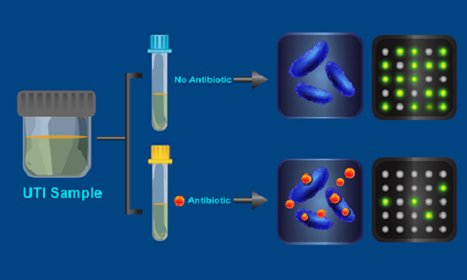California Institute of Technology, Caltech scientists develop a test that identifies antibiotic-resistant bacteria in as little as 30 minutes. The new test could help turn the tide by allowing medical professionals to better choose which antibiotics to treat an infection with.
Washington (ISJ) – The discovery of antibiotics in the early part of the 20th century changed modern medicine. Simple infections that previously killed people became easy to treat. Antibiotics’ ability to stave off infections made possible routine surgeries, organ transplants, and chemotherapy for the treatment of cancer.
But because of overuse and misuse, antibiotics are losing their effectiveness. Many species of bacteria have evolved resistance to commonly used antibiotics and multidrug-resistant bacteria—so-called superbugs—have emerged, plaguing hospitals and nursing homes. Last month, the World Health Organization issued a dire warning: The world is running out of antibiotics.
A new test developed at California Institute of Technology, Caltech that identifies antibiotic-resistant bacteria in as little as 30 minutes could help turn the tide by allowing medical professionals to better choose which antibiotics to treat an infection with. A paper describing the method appears in the October 4 issue of Science Translational Medicine.
When doctors treat patients with bacterial infections, they often skip over first-line antibiotics like methicillin or amoxicillin—drugs that bacteria are more likely to be resistant to—and go straight for stronger second-line antibiotics, like ciprofloxacin. This practice increases the chance that the treatment will be effective, but it is not ideal. That’s because the increased use of second-line antibiotics makes it more likely that bacteria also will become resistant to these stronger drugs.
“Right now, we’re overprescribing, so we’re seeing resistance much sooner than we have to for a lot of the antibiotics that we would otherwise want to preserve for more serious situations,” says Nathan Schoepp, a Caltech graduate student and co-author of the study.
The problem is that there has not been a quick and easy way for a doctor to know if their patient’s infection is resistant to particular antibiotics. To find out, the doctor would have to send a sample to a testing lab, and wait two to three days for an answer.
“Therapies are driven by guidelines developed by organizations like the World Health Organization or the Centers for Disease Control and Prevention without knowing what the patient actually has, because the tests are so slow,” says Rustem Ismagilov, Caltech’s Ethel Wilson Bowles and Robert Bowles Professor of Chemistry and Chemical Engineering and director of the Jacobs Institute for Molecular Engineering for Medicine. “We can change the world with a rapid test like this. We can change the way antibiotics are prescribed.”
The researchers focused on one of the most common types of infections in humans, urinary tract infections (UTIs), which 50 percent of women contract during their lifetimes. UTIs result in eight million doctor visits and one million ER visits each year in the United States alone.
Ismagilov and Schoepp plan to begin running the test on other types of infectious bacteria to see how well it performs. They also hope to tweak the testing procedures to work with blood samples. Blood infections are more difficult to test because the bacteria are present in much lower numbers than they are in urine, but such a test could help reduce mortality from blood-borne infections, which can turn fatal if not treated quickly.


